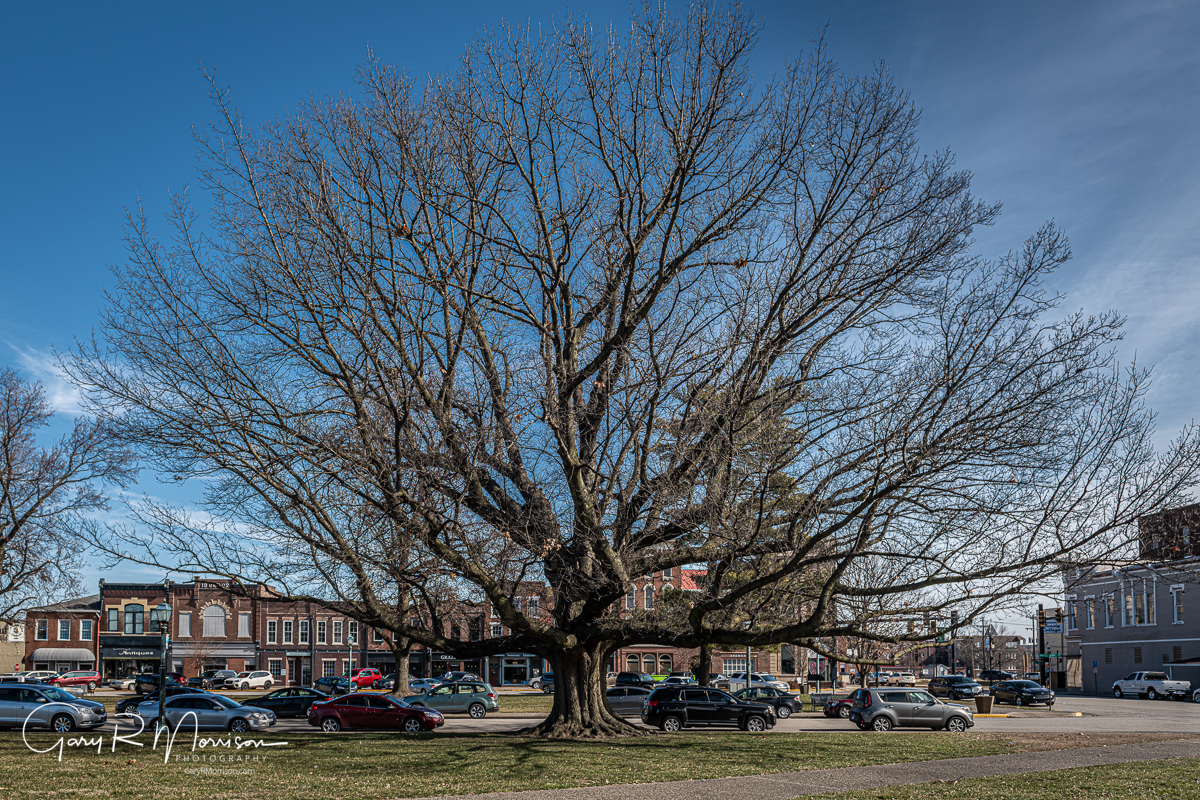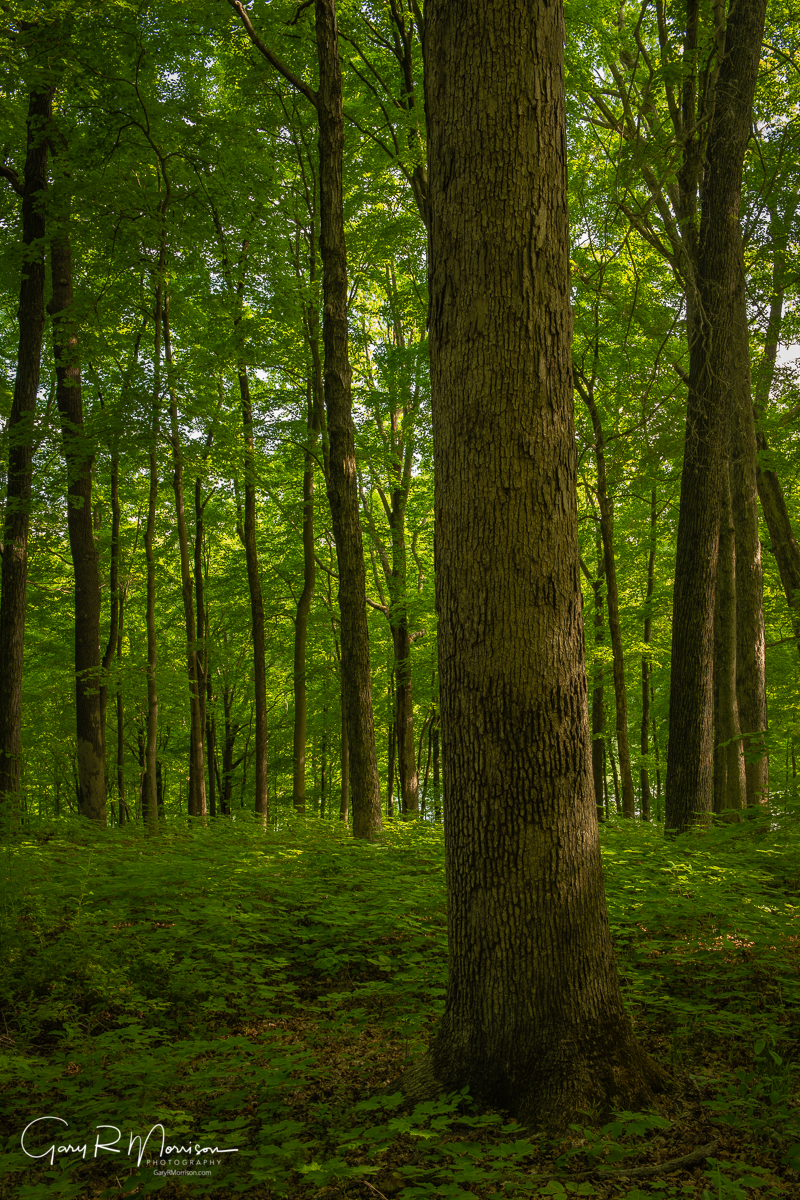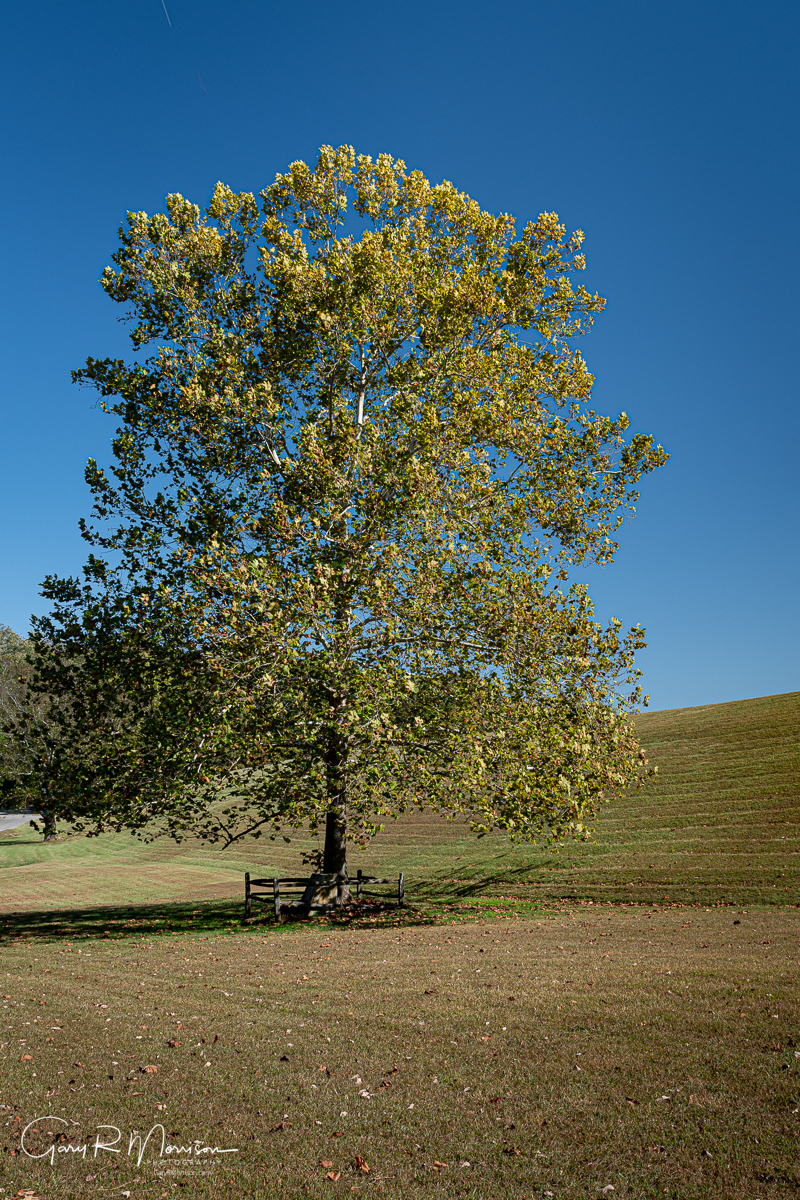Historic Trees of Indiana
For several years, I have spent much of my time photographing landscapes in Indiana. I tend to look at the forest rather than individual trees. I like reading about Indiana history and it was through my readings that I developed an interest in historical trees. But, much to my dismay I found that there were few historical trees left in Indiana. Phone call after phone call resulted in disappointment as someone would tell me that a tree I wanted to photographed was no longer standing. Finding fewer and fewer trees, I found an urgency to photograph the trees that I could find. Here is the story and photograph of one of the older trees.
Patrick Henry Square Northern Red Oak
This beautiful Northern red oak sits a short distance north of the George Rogers Clark Memorial building in Patrick Henry Square overlooking the Wabash River in Vincennes. The tree is part of the memorial to George Rogers Clark, a patriot and soldier during the Revolutionary War who was under the command of Patrick Henry, governor of Virginia. The tree, estimated to be approximately 300-years old, has a 60-inch diameter trunk with a limb structure that captures your attention.
Vincennes: The First Settlement in Indiana
Vincennes was established by French fur traders in 1732 and is the oldest settlement west of the Appalachians continually inhabited by Europeans. In 1777, the British built Fort Sackville near the current-day site of the George Rogers Clark Memorial. During this same time, Clark was with other colonists in forts in Kentucky that was a county of Virginia in 1777 (Madison, 2014). Clark and others were in Kentucky defending settlers from raids by Indians who were aligned with the British. The growing influence of the British, prompted Clark to convinced Patrick Henry and his advisors including Thomas Jefferson that the best defense of Kentucky against the British was to capture the French forts. These forts were occupied by the British and strategically located along the Mississippi and Wabash Rivers. In 1779, Clark and his militia of about 170 men made a daring winter raid and captured Fort Sackville. The capture was a decisive victory for the colonists and helped stop British control of the western territories. After capture, the fort was renamed Fort Patrick Henry in honor of the governor of Virginia.
Location of the Forts
Between 1969 and 1970, Indiana University conducted a geological survey just north of the memorial and found 18th- and 19th-century artifacts. Despite the discovery of these artifacts, they could not identify the exact location of Fort Sackville due to the proximity of the original French Stockade and later forts that were all built on the same site.
The Magnificent Northern Red Oak
This Northern red oak was most likely a witness to the early French fur traders and settlers as well as the battle of Fort Sackville. It sits on the northern edge of Patrick Henry Square and provides a beautiful view for the patrons of several nearby businesses and restaurants. Winter allows one to see the graceful beauty of the tree’s structure. During the summer, the wide canopy of the tree provides abundant shade for visitors. The trunk of the tree is intriguing as it looks as though a number of smaller trees were bunched together to make one larger tree. If you visit the memorial, the short walk north to view this tree and enjoy one of the local restaurants is well worth the trip.




